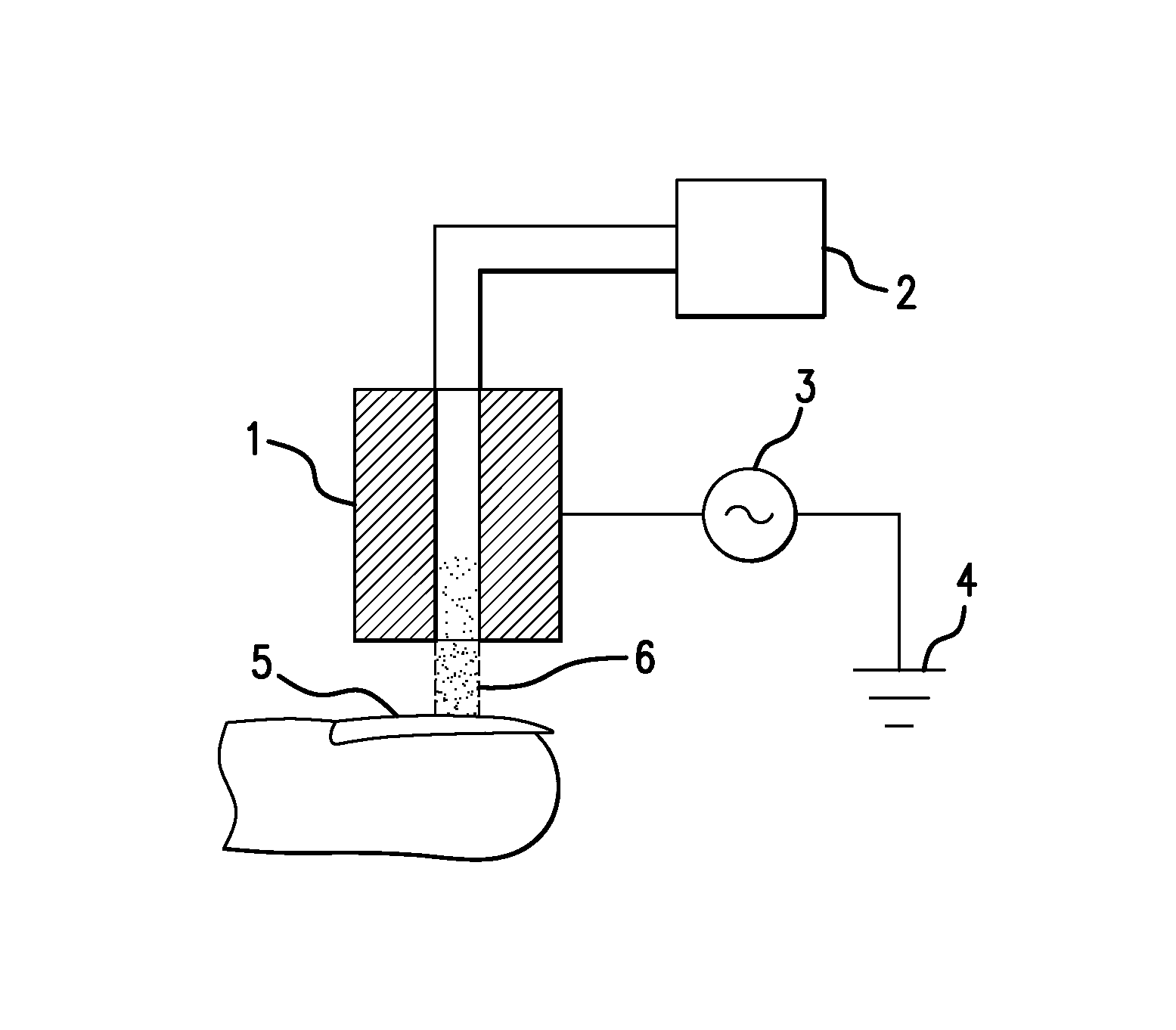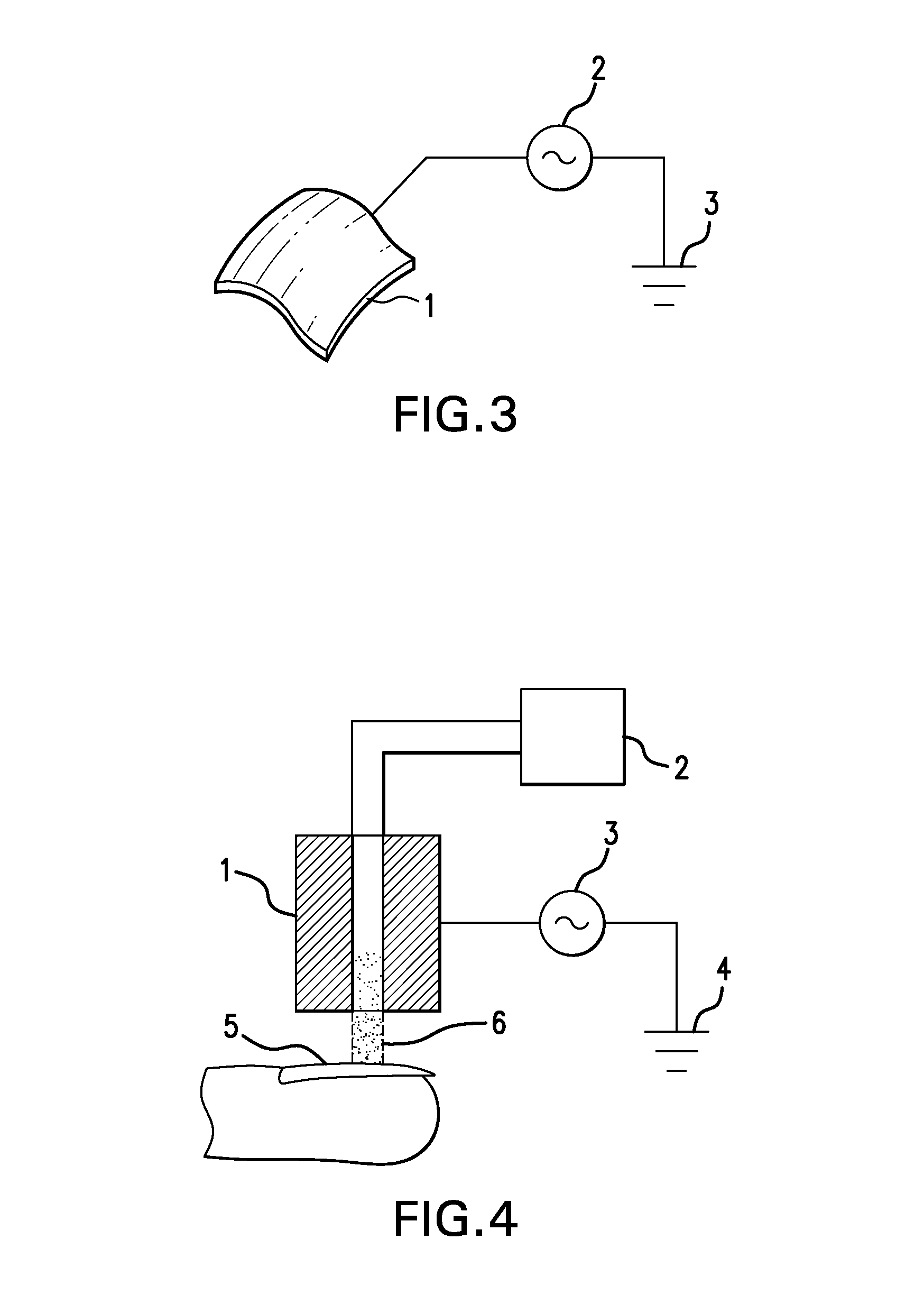Systems, methods and machine readable programs for electric field and/or plasma-assisted onychomycosis treatment
a plasma-assisted onychomycosis and treatment method technology, applied in the field of methods and systems for treating onychomycosis and other pathogenic infections of the nail, can solve the problems of difficult penetration, difficult treatment of onychomycosis, difficulty in penetrating the nail, etc., and achieve the effect of preventing tissue injury
- Summary
- Abstract
- Description
- Claims
- Application Information
AI Technical Summary
Benefits of technology
Problems solved by technology
Method used
Image
Examples
examples
[0119]The following summarizes in vitro work performed by Applicant evidencing that the disclosed systems and techniques are useful for killing the fungus responsible for onychomycosis in clinically-infected nail samples, including work done with a microsecond and a nanosecond power supply.
[0120]Applicant recently demonstrated the ability of cold atmospheric pressure plasma to kill T. rubrum, the fungus most frequently associated with onychomycosis, in vitro in a simulated nail model.
[0121]0.7×0.7 cm sections of 317.5 micron thick shim stock were cut and double washed in ethanol for 10 minutes. Next, 1 ml of stock T. rubrum was homogenized with 4 ml of sterile SDM (Sabouraud Dextrose media). The sterile shim stock was placed in 5 ml solution of T. rubrum and inoculated for 2 hours. After removing the shim stock from solution, it was plasma treated for varying time and frequency settings: 1.5 or 3 kHz, 30 seconds or 3 minutes. The treated shim stock was then placed on an SDA (agar) p...
PUM
 Login to View More
Login to View More Abstract
Description
Claims
Application Information
 Login to View More
Login to View More - R&D Engineer
- R&D Manager
- IP Professional
- Industry Leading Data Capabilities
- Powerful AI technology
- Patent DNA Extraction
Browse by: Latest US Patents, China's latest patents, Technical Efficacy Thesaurus, Application Domain, Technology Topic, Popular Technical Reports.
© 2024 PatSnap. All rights reserved.Legal|Privacy policy|Modern Slavery Act Transparency Statement|Sitemap|About US| Contact US: help@patsnap.com










